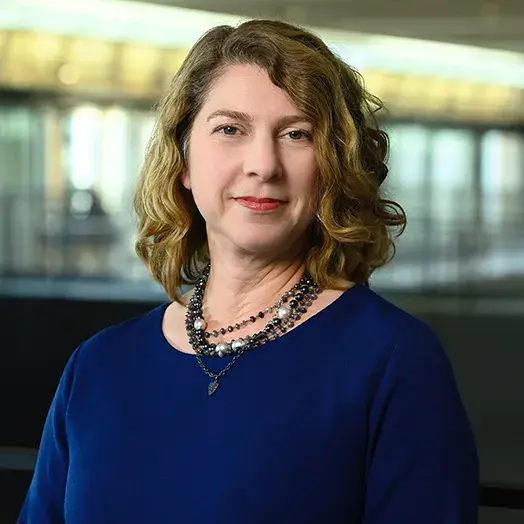Professor Rick Smith encourages chief human resources officers to take a holistic view of human capital with a focus on strategy execution, including artificial intelligence, to provide value for the future.

Who should lead organizations’ adaptation to AI?
There are at least three times as many chief human resources officers in the largest publicly traded American companies now than there were in 2000. But with artificial intelligence taking hold, what can HR leaders do to add value?
Johns Hopkins Carey Business School professor and organizational management expert Rick Smith says there are three things to focus on. Two of them might seem fairly obvious. One is corporate culture and work modality; in the age of broader remote and flexible work, CHROs put culture ahead of collaboration, work/life balance, or innovation on their list of concerns.
Another focus area is employee well-being. Jobs aren’t just jobs anymore, and workers want a sense of balance and purpose connected with their hours on the clock. Well-being has emerged as a key focus area needed to boost engagement, satisfaction, and performance.
The third area, though, might not be so evident: Smith says CHROs need to lead organizational adaptation to AI.
What to Read Next

research
What you need to know about ChatGPT and artificial intelligenceCan HR lead the human-AI teaming?
Smith, who heads the newly established Human Capital Development Lab at Carey Business School, shared his insights with the Society for Human Resources Management, one of the foremost experts and conveners in the HR profession. During the SHRM annual Visionaries Summit in Washington, D.C. last week, Smith told attendees in his keynote address that AI holds the greatest opportunity for the future of HR leadership.
“It's not about technology. It's about organizations,” he said. “AI is doing nothing but raising question after question around the world. I think it would be a mistake if CHRO’s said, ‘You know, this is the job of the chief technology officer.’ I think the CHRO can own AI when it comes to organizational adaptation.”
Leaders across nearly all organizations are working to determine what AI implies for their industry, their strategy, and their business model, Smith said. They need to sort out the conditions under which the organization will use it, how quickly employees can build capacity to leverage it, how the organization can be redesigned to capitalize on it, and what the legal implications are in the global environments where they operate.
And C-suites won’t be the only ones feeling the impact. Research and consulting giant Gartner says more than 80 percent of human resources leaders have either explored or implemented AI to improve process efficiency. AI will bring significant changes to the skills, jobs, and organization structures in the future, which will require a culture of resilience.
How can HR leaders prepare?
Managing change with new technology advances is never easy, yet many already anticipate wide-sweeping changes as a result of AI solutions. Having an adaptive work environment that is agile, flexible, and able to adjust to new solutions will be critical.
“Adaptive cultures are going to do better and significantly outperform others,” said Smith. “They're going see more rapid growth and higher return on their financial performance. When resilience is a part of the culture, it can be quite powerful, like a secret weapon in an organization.”
According to Smith, fewer than 150 S&P 500 companies had a CHRO in 2000. Now, because of executive oversight requirements, the struggle to find and keep talent, the increasing globalization and complexity of business, and the size of the workforce, almost all 500 of them do. While the surge is, of course, about staying competitive, Smith says CHROs are also the ones best suited to define and navigate organizational culture and build resiliency.
Yet in one survey of CEOs from a variety of businesses, nearly half did not believe their CHRO had business strategy skills.
“Clearly more work must be done to create a linkage between business strategy and the human capital system of an organization,” Smith said. “CHROs are more actively engaging in key elements of human capital that drive strategy execution such as organization structure, talent management, leadership, and culture.”Addressing these human capital development challenges is where the Human Capital Development Lab’s concept of a “human capital system” comes in. The system is built on four elements: an organization’s culture, its talent, its structure, and its human capital leadership. When these four elements are symbiotic, an organization is much more likely to thrive than when they’re not. And the CHRO is the person to ensure that symbiosis.
“Taking a holistic view of human capital with a focus on strategy execution, including AI, will provide the CHRO with a clear position of value for the future,” said Smith.


